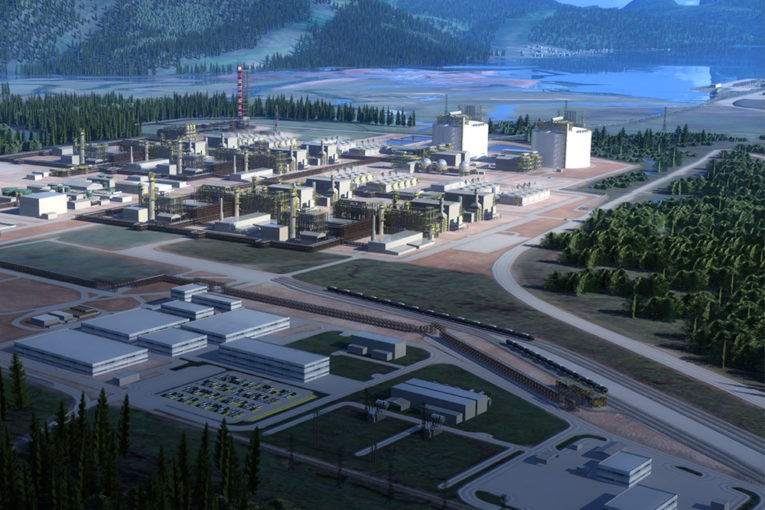
After two years of retreat, the prospect of large-scale energy developments being built in Canada took a couple of steps forward within just 48 hours.
Ottawa’s decision to buy out the Trans Mountain oil pipeline project was followed by news Thursday that Petronas acquired a stake in the mammoth $40-billion LNG Canada project.
This comes just 10 months after Malaysia’s state-owned energy company shelved its own Pacific NorthWest LNG project off the coast of British Columbia.
To be clear, there is no certainty a liquefied natural gas facility or the Trans Mountain expansion will be built.
The fact Ottawa had to buy out a private company to try to ensure a federally approved pipeline is completed is also discouraging.
But there’s no denying both projects gained a little momentum this week.
For an industry that’s struggled to see any progress in Canada on building significant new energy developments, even incremental progress is welcome.
“It is definitely a little bit of daylight,” said Ian Archer, associate director of North American natural gas for energy consultancy IHS Markit.
“We’ve made some baby steps.”
On Thursday, Petronas agreed to buy a 25 per cent share in the LNG Canada project. Shell Canada owns 40 per cent of the development, with PetroChina, Mitsubishi Corp. of Japan and South Korea’s Kogas also holding stakes.
“Petronas is in Canada for the long-term and we are exploring a number of business opportunities that will allow us to increase our production … in the north Montney,” Petronas president Wan Zulkiflee Wan Ariffin said in a statement.
The partners have yet to make a final investment decision, which is expected to take place in the second half of 2018.
Several factors are pointing in the right direction. A massive global glut of LNG is being whittled away faster than expected, potentially opening the window for a major project to be built off Canada’s west coast.
And Western Canada boasts massive supplies of cheap natural gas from world-class plays such as the Montney.
If the project is approved, it’s expected the first LNG shipment would leave Canada in the 2023-2024 timeframe.
It’s a sudden turnaround for Petronas, which paid $6 billion in 2012 to acquire Calgary-based producer Progress Energy Resources.
The Malaysian company had big expansion plans and was eyeing its own $36-billion LNG facility, but scrapped the project last summer citing “prolonged depressed prices and shifts in the energy industry.”
Today, hopes for a major liquefied natural gas facility in Canada rest on the shoulders of LNG Canada.
Pegged at $40 billion, the development would include a gas liquefaction plant and export facility located at Kitimat.
Jackie Forrest, senior director of research at ARC Energy Research Institute, notes if the Shell-led project goes ahead fully, it would consume the equivalent of 25 per cent of Western Canada’s existing production.
The news comes at a pivotal time for Canadian natural gas producers, who saw Alberta spot prices dip into negative territory last month and have been pummelled by transportation constraints.
Natural gas production hit 16.7 billion cubic feet per day in January, its highest point in a decade. However, gas exports to the United States have dropped by 26 per cent over the past decade, while American production has increased.
Building an LNG export facility would allow Canada to send some of its ample supplies of cheap gas into the Asian market.
“It’s important for Canada,” said Marty Proctor, CEO of Seven Generations Energy, one of the country’s largest gas producers.
“We all suffer from the fact we cannot get our products to other markets. We’re stuck with one customer — that customer gets a giant discount on what we have available — and this will be a nice step in the direction of improving pricing for the product.”
For Canadian gas producers, the decision by Petronas to join LNG Canada — bringing experience, customers and deep pockets to the table — is a hopeful sign the project will be sanctioned.
“It does provide some additional optimism to our industry,” said Andy Mah, CEO of Advantage Oil & Gas. “But there’s still a lot of work to do to bring foreign investment back to Canada.”
While he welcomed Thursday’s news, Peyto Exploration & Development CEO Darren Gee noted the industry and the country can’t afford to wait for six years to see gas markets improve.
A chart on his company’s website shows Alberta natural gas prices in March averaged US$1.18 per thousand cubic feet, compared with benchmark U.S. prices of $2.58, and Chinese LNG prices at $9.10.
“The discount we’re getting for our gas is way worse than what we’re getting for our oil,” he said.
For the hard-hit oilfield services sector, the prospect of a new oil pipeline or an LNG facility moving forward would be good news, potentially kick-starting sluggish exploration activity in the oilpatch.
But Mark Scholz, president of the Canadian Association of Oilwell Drilling Contractors, isn’t so sure progress is being made in the broader push to build new energy infrastructure.
Getting an oil pipeline to tidewater would improve prices for Canadian oil, but will only come about with public-sector dollars having to buy out the Trans Mountain project.
LNG holds promise, but the B.C. government’s attitude towards such energy investment is a wild card.
“I don’t agree things are kind of lifting; I’d say we have maybe stopped the bleeding,” he said.
There’s still plenty of skepticism about Canada’s ability to get big energy projects done. This suspicion is well earned.
This week’s steps toward a new oil pipeline and LNG facility are incremental, part of a long journey.
But every marathon requires thousands of steps. This week saw a few important ones taken in the right direction.
Chris Varcoe is a Calgary Herald columnist.
You can read more of the news on source
